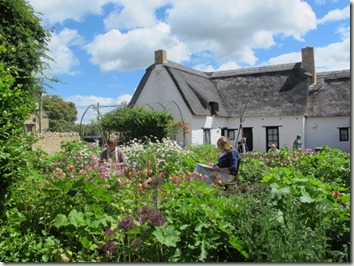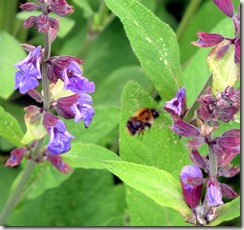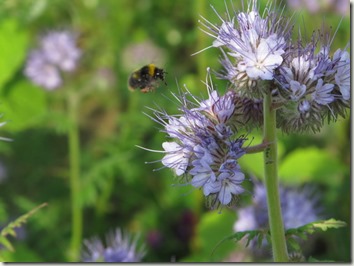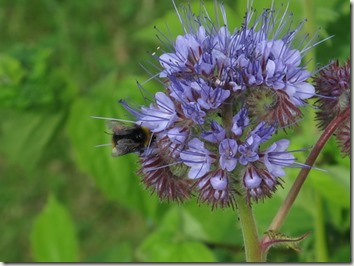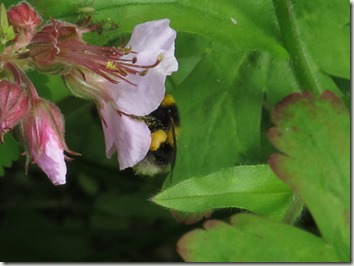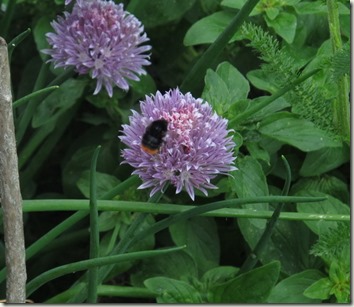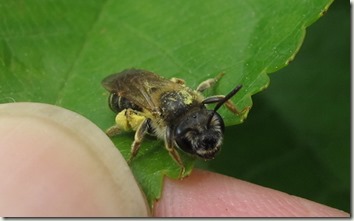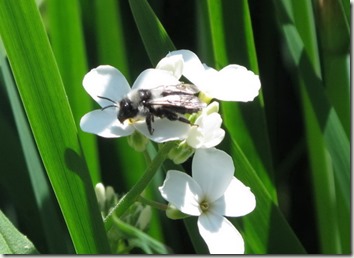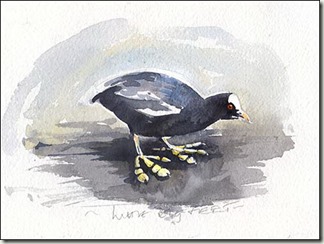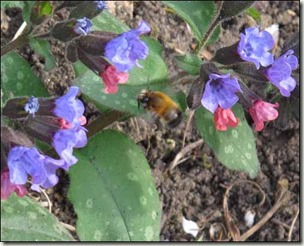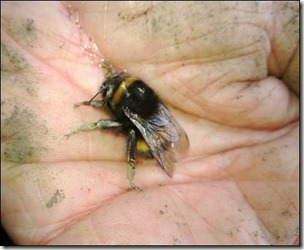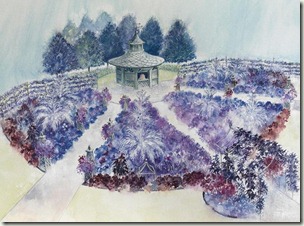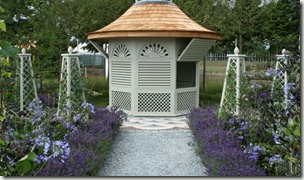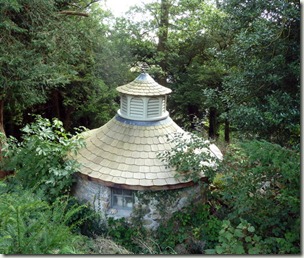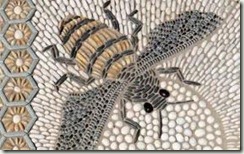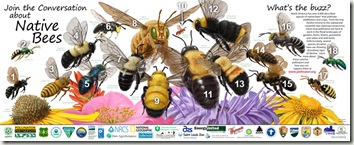I can’t think of a much lovelier combination. My idea of heaven with some very nice homemade soup and cake thrown in. With all my UK workshops I plan for rain, but hope for sun and we had a bit of both but were able to spend a good part of the day outside in the pretty courtyard garden, bee spotting and sketching.
Sketching in the sun
A Common Carder bee in the garden, possibly Clare’s “russet commoner”
Thanks to all who came and made it such an enjoyable day.
It really is the most beautiful and contemplative space. We looked at Clare’s poem “Wild Bees”, talked about the possible identities of the bees he so affectionately describes, found some obliging bees in amongst the aquilegias, raspberry flowers, dog roses and herbs and made sketches and flower studies.
I am in the middle of designing a illustrated version of the poem, so more of that and his observations of bees later. John Clare was a complex and much troubled man and his poetry varies enormously but I read that one of the most-used words in his poems is “joy”. It is his obvious joy in the natural world, the keenness of his observations and the simplicity of his language which make his work so appealing to me.
His own likings for work that “breathes of green fields and open sky” and for solitude make him endearing.
Would I have liked him? I am not sure.
But he tells of things that I have seen and felt, in words I could not use.
Say it for me John.
“Sweet solitude, what joy to be alone
In wild, wood-shady dell, to stay for hours.
Twould soften hearts if they were hard as stone
To see glad butterflies and smiling flowers.
Tis pleasant in these quiet lonely places,
Where not the voice of man our pleasure mars,
To see the little bees with coal black faces
Gathering sweets from little flowers like stars”
by John Clare

